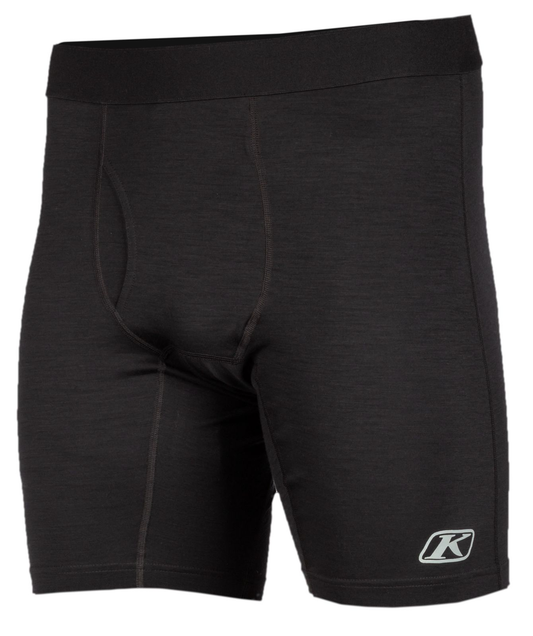KLIM - Comfort
KLIM Keeps Comfort In Mind
There are two types of people: Those who needlessly endure discomfort and those who learn how to control the external and internal forces at play so that discomfort never becomes an issue.
ENVIRONMENT
You can’t control the environment but you can control its effect upon you by creating a comfortable micro-climate for your body. This means dressing for your intended activity and surroundings. Many aggressive riders are faced with life-threatening conditions. This is why the clothing you wear needs to be capable of protecting you from rapidly changing conditions.
EQUIPMENT
Looking good is nice. Looking and feeling good is even better. Your outerwear, footwear, and gloves are not just fashion statements – they're functional equipment that allows you to stay active outdoors longer and in comfort. In extreme conditions, your equipment has to control heat transfer without fail because your comfort isn't the only thing at stake. So is your safety.
BODY
No two bodies are alike. Individuals with greater muscle mass find it easier to stay warm than those with less bulk, which explains why women tend to get colder more quickly than men. Even your physical condition, activity level, and personal perception can affect your level of comfort.
PHYSICAL CONDITION
Physically fit individuals experience less heat strain and are less likely to perceive discomfort from the same amount of activity than individuals whose bodies are not so well conditioned.
ACTIVITY LEVEL
Feeling cold? Get moving. Your body will start to produce heat. Produce too much, however, and your body’s cooling mechanism will kick in - by sweating. Unfortunately, sweat quickly leads to discomfort because water is a very good conductor of heat. To stay dry - and warm - clothing has to protect you from both external and internal sources of moisture.
PERCEPTION
Put two people in identical garments under identical but extreme conditions. Their individual perception of comfort may be as much as 10 degrees apart. So while your riding buddy might put on a balaclava when the mercury hits 15 degrees Fahrenheit, you might feel OK until the temperature reaches 5 degrees.
YOUR MICRO-CLIMATE
You can't see it, but a very thin layer of protective air surrounds you wherever you go. Say hello to your very own micro-climate. We are most comfortable with a micro-climate of around 90 degrees F and a relative humidity of less than 30 percent. Even the slightest change to these levels will result in discomfort. But what's good for your hands isn't always good for your shoulders - or your feet, for that matter. In cold weather, our arms and legs can be up to 45 degrees colder than the rest of our body - without any discomfort.
-
HEAD
In cold conditions you can lose more heat through your unprotected head alone than your entire body can produce. Even a warm coat can fail to keep you comfortable if your head is uncovered and cold. -
TORSO
Your torso is like one big country. It can be cold and wet in one spot but warm and dry in another. Did you know that your shoulder and lower-back regions are particularly sensitive to excessive cooling and require extra protection from the cold? If you want to stay comfortable, your clothing should take these "zones" into account. -
HANDS
Hands have it rough. They perspire a lot, they’re exposed to all sorts of extreme conditions, and they have to endure reduced blood circulation in cold weather. No wonder they are so prone to freezing. How your hands feel, the rest of you will feel, so keeping them warm and dry is critical. -
LEGS
They make up about 30% of our entire body. That's too much surface to ignore when you're trying be comfortable. And yet we do. We put on a pair of pants in the morning and make do with them all day long. If you're going to wear the same pants all day, they need to be able to handle different environments. -
FEET
So abused. So neglected. And so sweaty. Your feet perspire roughly one-quarter of a cup of moisture a day per foot while at rest and up to one full cup during activity and/or in hot weather. So where does all this moisture vapor go? If your footwear isn't breathable, it will stay right inside. Hello soggy socks.
CLIMATE CONTROL
You may not be able to control the weather, but you can control the climate closest to your body. How? By wearing outerwear and footwear that can manage moisture, control heat transfer, and protect from the weather.
-
MOISTURE MANAGEMENT
Dry = warm. It's that simple. When perspiration stays on your skin, it eventually gets cold - and so will you. Breathable outerwear and footwear keep you dry from the inside out by allowing this moisture to evaporate out away from your body. -
HEAT BALANCE
Being comfortable is a matter of balance: The amount of heat your body produces has to match the amount it loses. Wearing the right layers and choosing the appropriate levels of insulation for your chosen activity are key to maintaining comfortable body temperatures. -
WEATHER PROTECTION
Outdoor gear must create a protective barrier between you and whatever forces of nature have been unleashed upon you. The best defense? A clothing system made up of specific layers that work together to ensure the optimal combination of breathability and waterproofness so that you will stay dry and warm. Klim discount sled wear was created to keep you warm and comfortable during this winter season.
